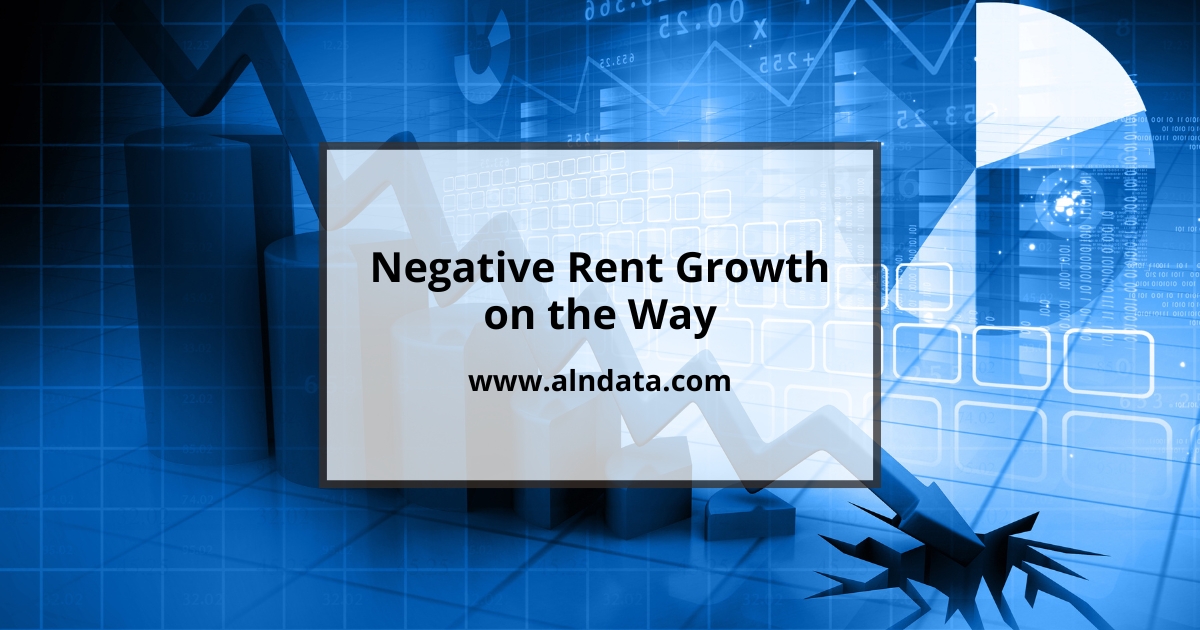Negative Rent Growth on the Way
Apartment demand has rebounded nicely in 2024 as the industry moves further away from the trough year of 2022. Despite the improvement, an unrelenting new construction pipeline in the midst of a peak in deliveries for this cycle has applied consistent downward pressure on average occupancy. In fact, not since late 2021 has national average occupancy managed a monthly gain.
With demand improved, but still underwater and with occupancy in a prolonged downward spiral, rent growth has been harder to come by. A 2% average effective rent gain for new leases this year through August was the lowest since 2020. There is also good reason to expect the annual result for 2024 to finish lower than the current 2% gain.
Further Occupancy Decline Expected
For properties that entered the year already stabilized, average occupancy closed August at 93%. When accounting for lease-up properties, national average occupancy finished the month at 88%. While it is true that the 88% average includes properties that will stabilize in the coming months, new properties are being delivered as fast as lease-up properties are stabilizing. For operators on the ground, 88% average occupancy arguably better reflects the conditions they are seeing than a stabilized-only average.
The overall occupancy metric has declined by around 130 basis points since the start of the year and has declined for twelve consecutive months. Despite August net absorption representing the high-water mark so far for 2024, it was paired with a 0.2% average occupancy decline – a loss larger than in June or July. The culprit was, of course, a simultaneous surge in deliveries in August.
The new construction pipeline is not expected to materially slow for the remainder of this year. In fact, that is unlikely to occur before 2026. With the new units set to be delivered in the coming months, even if net absorption continued to rise through the end of the year, overall occupancy would decline further. But net absorption is unlikely to continue along such a trajectory. More likely, August will be the monthly peak for 2024 and the next six months or so will feature more modest monthly totals.
In 2022, monthly net absorption was negative from August through December. In 2023, the same could be said only for November and December. This year, the multifamily industry may well avoid any monthly net loss of leased units for the first time of 2021. Even so, positive net absorption does not always correspond to positive occupancy growth.
Average Effective Rent Trend
In years in which black swan events like a global pandemic do not happen, monthly national average effective rent growth for new leases generally peaks sometime in the second quarter. In some years May is the peak, in others the peak is in June. However, broadly speaking, it is unusual to see rent growth accelerate in the second half of the year.
So far in 2024, the monthly gain of a hair over 0.4% that occurred in May has been the high point. The year has looked very typical in terms of the month-over-moth trend. January was the low point, with improvement in February and March leading to a peak period from April through June. Rent growth then slowed slightly in July and again in August.
It is possible that monthly rent growth will turn negative in September as it did in 2023. However, the net absorption trend has remained more robust than was the case this time last year. More likely, rent growth will turn negative in the fourth quarter.
Aside from granular questions of timing, the big-picture view is fairly clear. New supply is expected to remain high in the coming months. At the same time, net absorption is likely to soften, and the result will be further average occupancy losses. With supply outpacing demand, average occupancy falling, and seasonal headwinds impacting rent performance – conditions appear primed for some ground to be given up in the coming months on the rent front.
Takeaways
In many ways, 2024 has played out to expectations for the multifamily industry to this point. Apartment demand has continued the improvement that began last year but has failed both to regain its pre-pandemic level and to even approach offsetting generational levels of new supply.
This has resulted in average occupancy continuing its downward trend that has now been ongoing for almost thirty-six months. Rent growth in such an environment will naturally be difficult to come by. It should be no surprise to see this year’s gain through August lower than in the previous three years.
Opportunity for sustained growth should return in spring, but the next handful of months are likely to eat into the current year-to-date gain. A small win for the industry would be for 2024 average effective rent growth to finish slightly higher than last year’s 1.1% annual increase.
Disclaimer: All content and information within this article is for informational purposes only. ALN Apartment Data makes no representation as to the accuracy or completeness of any information in this or any other article posted on this site or found by following any link on this site. The owner will not be held liable for any losses, injuries, or damages from the display or use of this information. All content and information in this article may be shared provided a link to the article or website is included in the shared content.

